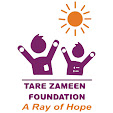Despite being one of the fastest-growing economies globally, India makes for more than one-third of its malnourished children. Stunted growth and malnutrition traits are found in almost half of the children in our country, accounting for 68% of the total under-5 death rate, as revealed by a report in 2019.
Causes
The most apparent and obvious reason for malnutrition in India and the world is poverty and economic inequality. India, as much as it is progressing fiscally, still qualifies as an emerging nation. Ranking third among countries with a serious hunger situation, one in every five children in India is affected by malnutrition.
The socio-economic status of families largely impacts the health of the mother and the child. It is a well-known fact that malnourished children are found more in poor localities than in rich ones. Many expecting women are afflicted with anemia, meaning that the child is deprived of proper nourishment even before it is born. Weakened children are also more prone to diseases like jaundice and cholera.
Some children also succumb to malnutrition because of the dietary practices prevalent in the families and communities. While some communities in India are exclusively vegetarian or vegan, some others predominantly consume meat. This means that the children in such families are perpetually fed meals that are inadequate in necessary nutrients.
Domestic abuse is another burden that some pregnant women have to bear. It is heartbreaking that women have to suffer abuse in some households even during the time the woman bearing a child needs to be treated delicately with proper rest and food. The girl child is also more likely to be malnourished than a boy child as India is a society where there is a pronounced son preference.
Government Initiatives
The government of India has taken up several initiatives and schemes to combat this situation. Listed below are some prominent government programs that deal with malnutrition in India.
- Midday meal scheme- Launched in 1995, the scheme provides freshly cooked lunches in government schools free of cost.
- Integrated Child Development Scheme aims to improve the health of mother and child by imparting education and awareness and helping them obtain health services and adequate meals.
- National Rural Health Mission- It was created to improve the rural population's overall health, with special emphasis on the poor, women, and children.
India's battle with malnourishment has been slow-moving. We are nowhere close to achieving the nine nutrition goals set by WHO, which were adopted to eradicate malnutrition. Apart from under-nutrition, urban cities are also encountering more and more cases of over-nutrition and obesity. At this point, government efforts and civil society have to work together diligently to rid India of malnutrition.





1 Comments
Good.
ReplyDeleteFree Treatment in Punjab